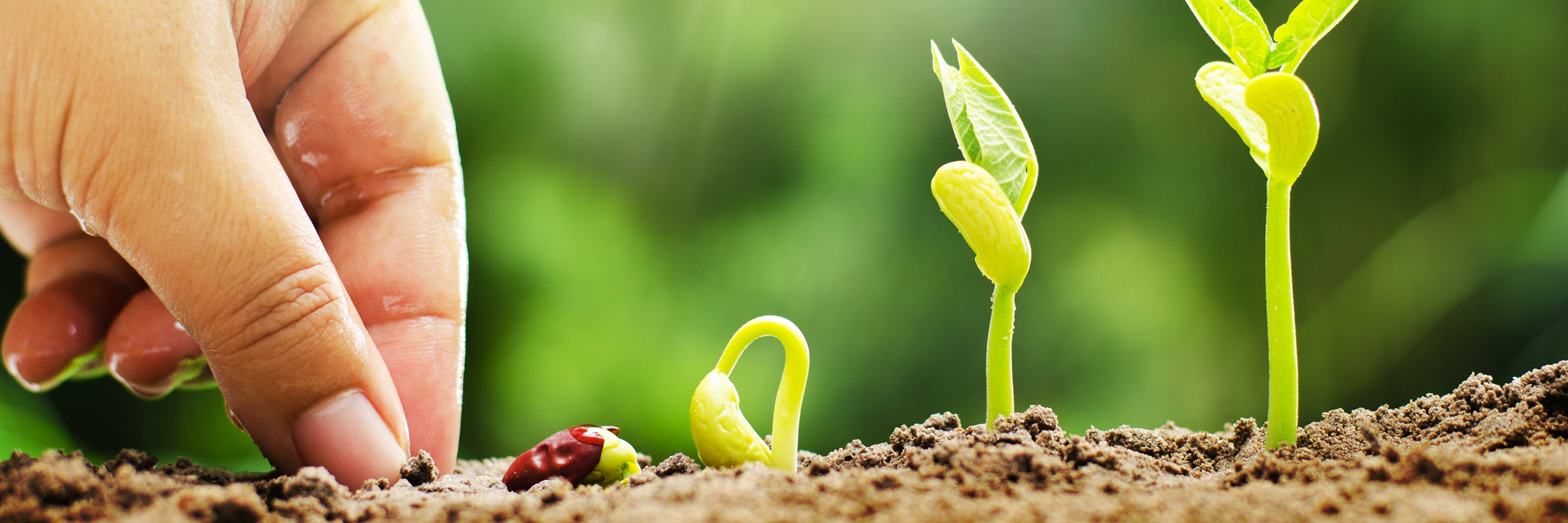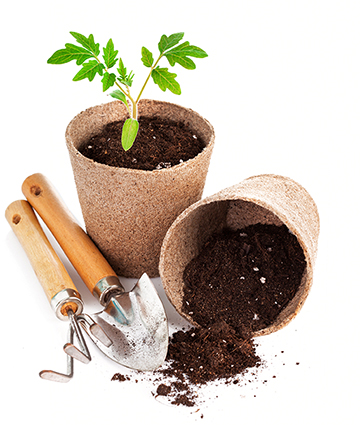Seed Library

Discover the Joy of Gardening
A seed library is a place where people of all gardening levels (even aspiring gardeners) can borrow, exchange, or donate seeds for growing plants. It operates similarly to a traditional library, but instead of books, it offers seeds for people to grow in their home gardens.
It’s a simple, low-risk way of trying something new! Borrow seeds, grow them, and then return some of the seeds from your harvested plants to replenish the library’s stock.
This model promotes seed diversity, community engagement in gardening, and sustainability by encouraging the saving and sharing of seeds among local gardeners. Seed libraries also serve as educational resources, providing information on gardening techniques, seed saving, and the importance of preserving heirloom and indigenous plant varieties.
If you want to see exactly what seeds we have available you can search them in our library catalog by searching “Winnetka Seed Library” and you will see all available varieties. If you have questions, please contact seedlibrary@wnpld.org.
Helpful Tips
Always save seeds from the healthiest, “true-to-type” plants.
Select seeds for different characteristics such as size, taste, and disease-resistance.
Plan your garden to reduce cross-pollination by using isolation distances below.
Label your garden and packets.
Don’t save seeds from plants labeled hybrids or from the grocery store.

Flowers
Many old-fashioned annuals grow quite well from seeds collected and stored at home. Zinnias, sunflowers, cosmos, marigolds, California poppies, petunias, cleome, snapdragons, nigella and calendula are among the easiest seeds to harvest and replant in the spring.
Plant: Plant different varieties of the same flower 10 ft. apart.
Harvest: The seeds of most flowers are ready to harvest about a month after the blossoms fade, when the seed heads turn brown. Cut off the seed heads and bring inside to thoroughly dry. Remove the excess plant material and save the seeds.
Labeling: Label the variety of flower and color.
Expected Seed Life: 4-6 years
Tomatoes
Plant: Plant different varieties of tomatoes 10-20 ft. apart.
Harvest: Collect ripe tomatoes. Squeeze pulp and seeds into a jar. Let ferment for 2-3 days until a mold forms. Add water. Pour off mold, floating seeds, and pulp. Viable seeds sink. Repeat. Put on a labeled paper towel to dry.
Labeling: Determinant (bush)/ Indeterminant (vining); use slicer/paste/ drying/canning/freezing; color; shape; size.
Expected Seed Life: 4-6 years
Peppers
Plant: Plant different varieties of peppers 10-20 ft. apart.
Harvest: Collect fully ripe peppers and let them dry off the plant for about
a month before removing the seed. Tear open the skin of the fruit and gently rub and shake the seeds from the central cone onto a small mesh surface, like a sieve. Wear gloves and a mask if you are saving hot peppers seeds since the alkaline compounds that gives hot peppers their spice, capsaicinoids, can be very irritating to the eyes, nose, skin, and throat. Use water to gently rinse the seeds on your sieve to clean away any unwanted material. Once clean, allow the seeds to dry in a cool location until the seeds are dry enough to break under pressure from a fingernail.
Labeling: Besides labeling the variety, specify the category of heat, color and shape.
Expected Seed Life: 2-5 years
Lettuce
Plant: Plant different varieties of lettuce 10 ft apart. Plant at least 10-20 seeds of each variety. Plant using typical spacing. Before they crowd each other, thin the 10-20 plants that are being grown for seed to 12-16” on center spacing.
Harvest: When growing lettuce to seed, let the lettuce bolt. When half the flowers have turned white & fluffy, cut off the stalk and put upside down in a brown paper bag to dry. Remove chaff.
Labeling: Besides labeling the variety, specify the category of lettuce: romaine/cos, looseleaf, crisphead, butterhead/bibb or celtuce.
Expected Seed Life: 2-4 years
Peas & Common Beans
Plant: Plant different varieties of peas or common beans 10-20 ft apart. Plant a minimum of 5-10 plants of each variety. Common beans (Phaseolus vulgaris) include green, pinto, and pole beans.
Harvest: Let beans and peas dry on the vine until crispy. Collect. Shell.
Labeling: Peas: bush/vining; use soup/shelling/snap/snow. Beans: bush/pole; green/dry/freezing/canning.
Expected Seed Life: 3-4 years
Fava, Lima & Runner Beans
Plant: Only plant one variety of each fava, lima, and runner beans. These species have big flowers and can easily cross with other varieties! Plant at least 10-25 plants. The harvesting process and seed life are the same as common beans.
How to Test the Viability of Your Harvested Seeds
Floater test: Place seeds in a jar of water and remove any that float. The floating seeds are less dense than viable seed because they are either damaged or never developed the seed embryo. Make sure to dry the seed again before storage.
Germination tests: Arrange 10-15 seeds in between several damp paper towels making sure that no two seeds are touching. Place the towels and seeds into a sealable plastic bag and leave them someplace warm for two weeks. After two weeks, open the paper towels and count how many seeds have sprouted. This number divided by the original number of seeds in the damp towels can be used to calculate an approximate percentage of viable seeds.
Frequently Asked Questions
We have a selection of flowers and vegetables. All the seeds are open-pollinated so they can be saved at the end of the season. Many are organic and/or heirloom. Each packet of seeds contains approximately 5–10 seeds. If you want to see exactly what seeds we have available you can search them in our library catalog by searching “Winnetka Seed Library” and you will see all available varieties.
We have Seed Libraries available at both WNPLD locations. At the Winnetka Library, it’s located on the main floor by the elevator. At the Northfield Library, it’s located by the hold shelves.
Yes, it is limited to district cardholders only.
To help our seed library thrive and expand each year, we kindly request that you consider harvesting and returning seeds from your crops. Once harvested, be sure to thoroughly dry them and store them in a cool, dry place until you’re able to bring them back to the library. It’s also helpful to save the packet from the seeds you borrowed, as it contains important information that will assist us.
You’re welcome to hold on to the seeds you borrow; returning them is not mandatory. However, we do encourage everyone to discover the joys of seed saving. While we acknowledge that not all seeds will successfully grow, we appreciate any attempts to return borrowed seeds whenever possible.
The Seed Library is available seasonally between February–November, or until we run out of seeds.
Each seed packet checks out for six months. At the end of the growing season, each seed packet will be checked in from the patron’s record.
Yes! You can drop the seeds off at the Patron Services desk. Please include the name of the seed and a way for us to contact you in case we have questions.